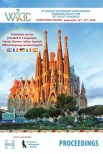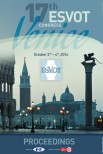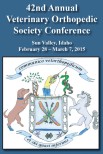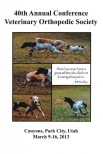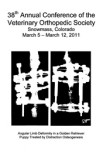Objective: To compare the mechanical properties and failure modes of a standardized short oblique distal radial metaphyseal osteotomy stabilized using either a transfixation pin cast (TPC), a modular-sidebar external skeletal fixator (ESF), or a solid-sidebar ESF (modular- or solid-ESF, respectively) using static or cyclic axial loading to failure.
Study Design: In vitro study.
Animals: Equine cadaver forelimbs.
Methods: A 30° oblique distal radial osteotomy was created and stabilized using 1 of the 3 fixation methods: (1) TPC, (2) modular-ESF, or (3) solid-ESF. Limbs were tested using static (TPC, modular-ESF, and solid-ESF) or cyclic (TPC and solid-ESF) axial loading to failure. The stiffness, yield load, yield displacement, failure load, and failure displacement for static loading and the cycles to failure for cyclic loading at 75% failure load were obtained. Data were analyzed using a Kruskal–Wallis test. Level of significance was P<.05.
Results: The solid-ESF had a greater stiffness, higher yield and failure load and a lower yield and failure displacement than the TPC (P=.01) and the modular-ESF (P=.02). TPC had a higher yield load, failure load, and yield displacement than the modular-ESF (P=.01). Mean cycles to failure for TPC was 2996±657 at a load of 16,000 N and for solid-ESF 6560±90 cycles at a load of 25,000 N.
Conclusions: The solid-ESF was stiffer and stronger than the TPC and modular-ESF and failed at a greater number of cycles in axial loading compared with the TPC.
Clinical Relevance: This study is an initial step in evaluating the solid-ESF. Further testing needs to be performed, but this fixation may offer a viable alternative to the traditional TPC for stabilization of long bone fractures in adult horses.


